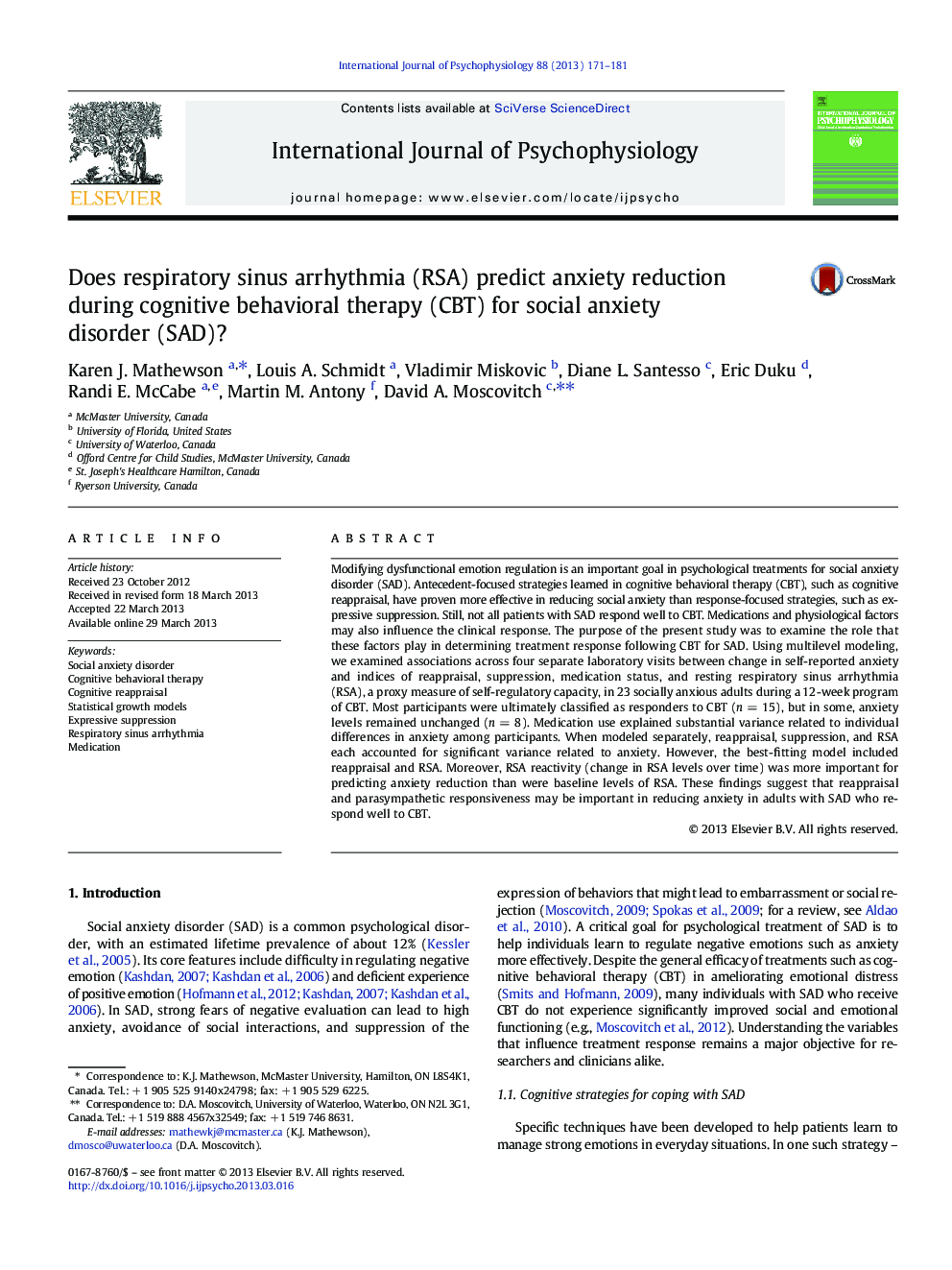| کد مقاله | کد نشریه | سال انتشار | مقاله انگلیسی | نسخه تمام متن |
|---|---|---|---|---|
| 929810 | 1474431 | 2013 | 11 صفحه PDF | دانلود رایگان |

• Multilevel models were used to examine anxiety reduction in 23 socially anxious adults.
• Some variance in individual levels of anxiety was explained by medication use.
• Reappraisal and suppression use explained significant variance in anxiety reduction.
• Respiratory sinus arrhythmia (RSA) explained significant variance in anxiety reduction.
• RSA reactivity was more important than individual levels of RSA in predictions.
Modifying dysfunctional emotion regulation is an important goal in psychological treatments for social anxiety disorder (SAD). Antecedent-focused strategies learned in cognitive behavioral therapy (CBT), such as cognitive reappraisal, have proven more effective in reducing social anxiety than response-focused strategies, such as expressive suppression. Still, not all patients with SAD respond well to CBT. Medications and physiological factors may also influence the clinical response. The purpose of the present study was to examine the role that these factors play in determining treatment response following CBT for SAD. Using multilevel modeling, we examined associations across four separate laboratory visits between change in self-reported anxiety and indices of reappraisal, suppression, medication status, and resting respiratory sinus arrhythmia (RSA), a proxy measure of self-regulatory capacity, in 23 socially anxious adults during a 12-week program of CBT. Most participants were ultimately classified as responders to CBT (n = 15), but in some, anxiety levels remained unchanged (n = 8). Medication use explained substantial variance related to individual differences in anxiety among participants. When modeled separately, reappraisal, suppression, and RSA each accounted for significant variance related to anxiety. However, the best-fitting model included reappraisal and RSA. Moreover, RSA reactivity (change in RSA levels over time) was more important for predicting anxiety reduction than were baseline levels of RSA. These findings suggest that reappraisal and parasympathetic responsiveness may be important in reducing anxiety in adults with SAD who respond well to CBT.
Journal: International Journal of Psychophysiology - Volume 88, Issue 2, May 2013, Pages 171–181